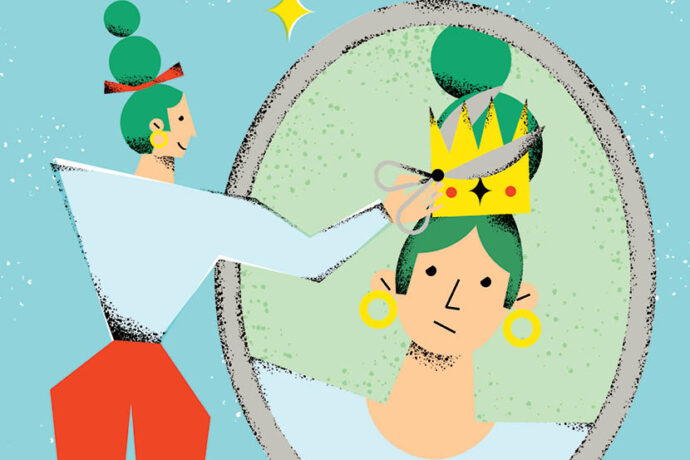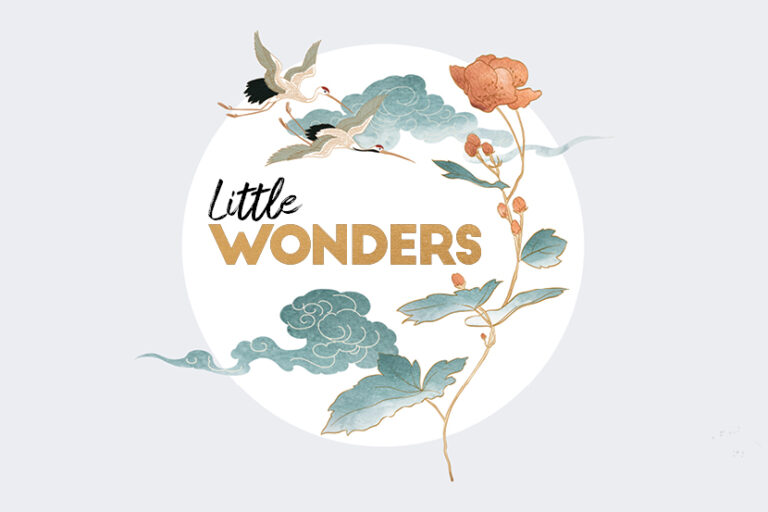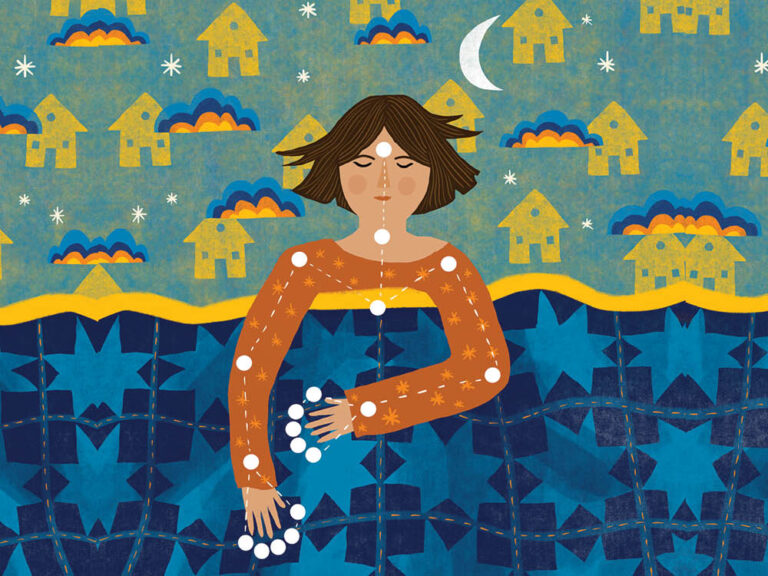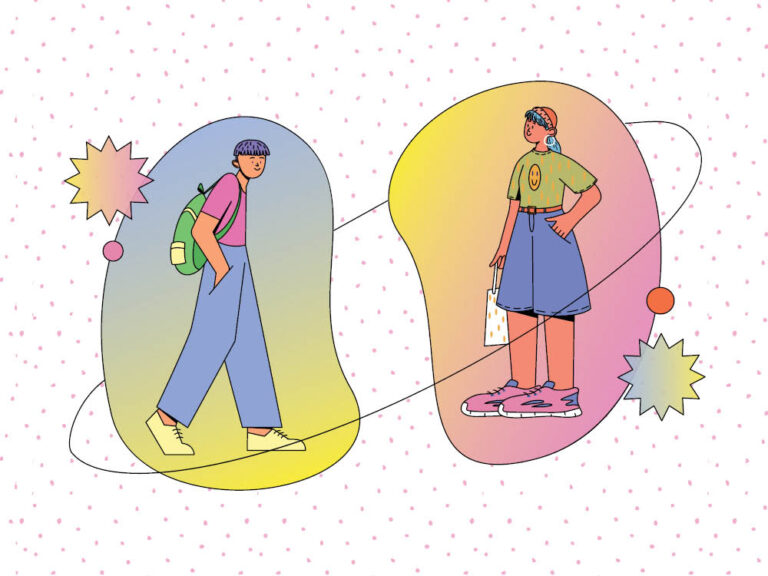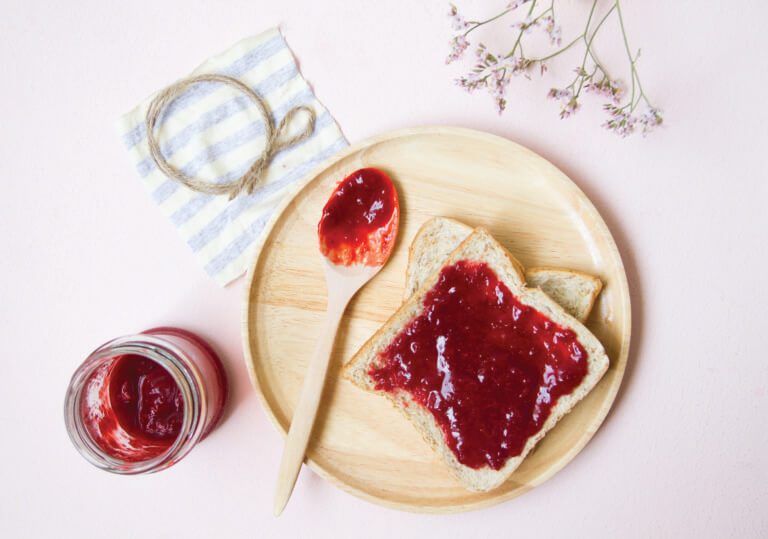
Sometimes, we are what we eat. In this case I’m jam on toast
The sweet aroma of strawberries swims through the air. Torn remnants of brown paper packaging lie beside a modest glass jar, the spidery scrawl of my Grandma’s handwriting barely discernible on the scattered pieces. I disturb the smooth-set surface of the jar’s contents, tenderly extracting a rich, rosy-coloured dollop. Under the guidance of my knife, the preserve pools over warm, buttery toast, exposing a bounty of seeds and glistening pulp. Savouring the lively taste of the berries as they dance upon my tongue, faint sparks are thrown on distant memories, each mouthful rekindling much-loved vestiges of my childhood.
Fleeting glimpses of tilled countryside, speckled with farmhouses, from the backseat of a decades-old station wagon. The gentle warmth of my Grandma’s wrinkled hand clasped around mine. Bright pink gumboots pattering gloriously in the mud beneath me. While the memories recalled in this humble jar of jam are unique to me, the nature of this experience isn’t. Over a century ago, French writer Marcel Proust immortalised a similar magical moment in his novel, Remembrance of Things Past. From the blissful union of lime-blossom tea and a madeleine sponge sprang scenes of the protagonist’s youth. The dwellings and gardens at Combray; the old, grey house of his childhood; and the buttery crumbs of a petite, shell-shaped cake dipped in his aunt’s Sunday cuppa.
Most of us will have experienced powerful emotions and memories evoked by a particular meal. It might be an affect-laden lasagne that mum makes, using oregano from her garden. Or in my husband’s case, the briny, oil-rich flavour of pickled herrings – rollmops – that hark to his German heritage (for me, this snack is shudder-inducing rather than sentimental). No matter the morsel, it seems that food is a powerful and effective pathway to the past. So why is it that when I take a bite of toast with strawberry jam, I can feel the sharp sting of a cool Tasmanian morning on my tiny cheeks, as row upon row of flat, dark-green leaves glisten upon the ground?
Food has never been just a nutritional means of survival. What we eat has huge symbolic significance. An expert on human food choice, psychologist Paul Rozin notes that apart from the act of breathing, eating is perhaps the most intimate exchange between ourselves and our environment: ‘The insulated safe, self… experiences a material breach of this boundary a few times a day in the act of eating. The world enters the self.’ With a similar stance, social scientist Claude Fischler proposes that when sending our snacks across the frontier between the outside and inside of our bodies, the world becomes us, and we become the world. Or, to put it in the (rather unromantic) proverbial phrase with which many of us are familiar: you are what you eat.
In eating, we enact and re-enact our social and cultural identity; more than a mere combination of essential nutrients, what we eat can be a medium for our memories and our sense of self. But as Proust’s madeleine, and my Grandma’s jam might suggest, not all meals and memories are created equal. Food may well allow us to enter a magical realm of recollection, but you’re unlikely to form a sacred and self-affirming relationship with every acai bowl or Insta-worthy avo toast. However, what Proust also tells us is that it’s possible to discover an essence of magic and meaning in the everyday. So how might we help create these emotionally appetising experiences?
As Scott Horton notes when analysing Proust’s recollection, the vibrance and detail of a memory ‘depend a lot on the mood of the individual, both at the time of the initial experience and at the time of occurrence.’ As Horton says, ‘our mind seems to act like a great sewing machine, stitching things together for reasons that may not immediately be present, but which generally relate to the synchronisation of the senses.’ Proust’s story encourages an appreciative and almost therapeutic outlook on life. By paying particular attention to mundane things, like a meal, we can mindfully honour the humble here and now – and hopefully create lasting impressions to provide us with love and comfort. So the next time you’re in the kitchen with your kids, out to tea with friends, or sitting solo at a café with nothing more than a coffee and a simple slice of cake: slow down, savour the experience, and make a meal of every moment.
As I take another chomp of toast, the strawberry spread sends up wisps of recollection: my little sister clasping a small pail with chubby hands; a tiny squeal erupting as Grandma deftly parts dewy, silver-haired leaves to reveal the red gems clustered beneath. Sorrell fruit farm stretching upwards and forever in front of me, until it seems to meet the burgeoning grey sky. The memory ripples, like the surface of a pond at the touch of a fallen leaf; kneeling expectantly, I can feel the cool, hard wood of Grandma’s dining chair, the air palpable with simmering strawberries. In the present I am enveloped by an exquisite flood of feelings as I consider the possibility that someone, somewhere is savouring their own sublime remembrance of things past.






